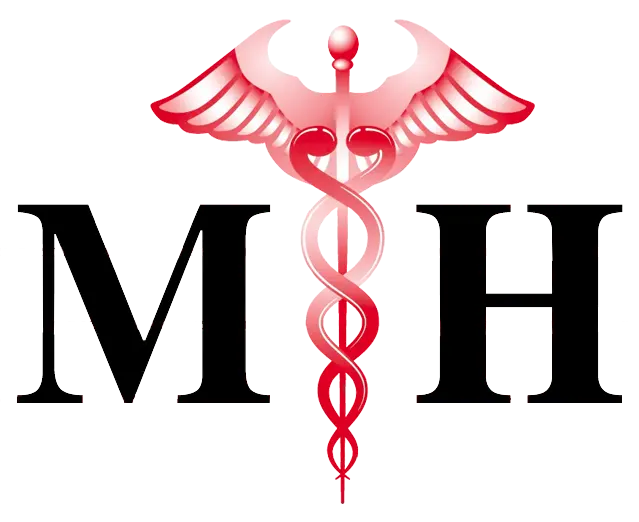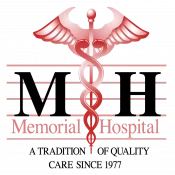Exposure to the sun’s harmful ultraviolet (UV) rays can cause significant damage to our skin, making it essential to prioritize sun protection. From premature aging signs like wrinkles, age spots, and sagging skin to an increased risk of skin cancer, the consequences of sun damage can be far-reaching.
In this blog post, we will explore effective ways to prevent and treat sun damaged skin, empowering you to take proactive steps towards healthier and more radiant skin. By understanding the dangers of sun exposure and implementing protective measures, you can safeguard your skin and enjoy the outdoors with confidence.
Understanding Sun Damage
Exposure to the sun’s UV rays can lead to various forms of skin damage, making it crucial to comprehend the underlying mechanisms and effects. The sun emits two primary types of UV rays: UVA and UVB.
UVA rays have a longer wavelength and can penetrate the deeper layers of the skin. They contribute to premature aging by breaking down collagen and elastin fibers, leading to the formation of wrinkles, fine lines, and sagging skin. UVA rays are present throughout the year and can even penetrate through clouds and glass, emphasizing the need for year-round sun protection.
UVB rays, on the other hand, have a shorter wavelength and primarily affect the superficial layers of the skin. They are responsible for causing sunburn and play a key role in the development of skin cancer. UVB rays are more intense during the summer months and can be blocked by glass and clouds to some extent.
Common Signs and Symptoms of Sun Damage
Sunburn: Redness, pain, and peeling of the skin due to excessive UV exposure.
Hyperpigmentation: Dark spots or patches on the skin, also known as sunspots or age spots.
Wrinkles and Fine Lines: Premature aging signs characterized by the formation of creases and folds on the skin.
Uneven Skin Texture: Rough, dry, or scaly skin caused by the breakdown of collagen and elastin.
Melasma: Brown or grayish patches on the face, often triggered by sun exposure and hormonal changes.
By understanding the nature of sun damage and recognizing its signs and symptoms, you can take proactive measures to protect and care for your skin effectively.
Prevention Tips for Sun Damage
Wear Sunscreen
Apply a broad-spectrum sunscreen with a minimum SPF of 30 before heading outdoors. Make sure to cover all exposed areas, including the face, neck, arms, and legs. Reapply every two hours or after swimming or excessive sweating.
Wear Protective Clothing
Cover your skin with lightweight, long-sleeved shirts, pants, and wide-brimmed hats. Opt for tightly woven fabrics that offer better sun protection.
Avoid Tanning Beds
Tanning beds emit concentrated UV radiation, which can significantly damage your skin and increase the risk of skin cancer. Opt for safer alternatives like self-tanning products if you desire a bronzed appearance.
Check Medications
Some medications can increase your skin’s sensitivity to the sun. Consult with your healthcare provider or pharmacist to determine if any medications you are taking may have this effect.
Seek Shade
Limit your sun exposure during peak hours when the sun’s rays are the strongest, typically between 10 a.m. and 4 p.m. Seek shade under trees, umbrellas, or use protective clothing to minimize direct sun exposure.
Use Sunglasses
Protect your eyes from harmful UV rays by wearing sunglasses that block 100% of UVA and UVB rays. Look for sunglasses labeled as providing UV protection.
Stay Hydrated
Proper hydration is essential for maintaining healthy skin. Drink plenty of water throughout the day to keep your skin hydrated from within.
Regular Skin Checks
Perform regular self-examinations to monitor your skin for any changes or suspicious growths. If you notice any unusual moles, spots, or lesions, seek medical attention promptly.
By following these prevention tips, you can significantly reduce the risk of sun damage and promote the long-term health and vitality of your skin. Remember, sun protection is a year-round commitment, regardless of the weather or season.
Treatment Options for Sun-Damaged Skin
If you have already experienced sun damage, there are several treatment options available to help restore and rejuvenate your skin. The choice of treatment depends on the extent of the damage and the specific concerns you have. Here are some common treatment options for sun-damaged skin:
Topical Treatments
Over-the-counter creams and lotions containing ingredients like retinoids, antioxidants, and alpha hydroxy acids (AHAs) can help improve the appearance of sun-damaged skin. These products work by promoting skin cell turnover, reducing the appearance of fine lines, and improving skin texture and tone.
Laser Therapy
Laser treatments, such as intense pulsed light (IPL) therapy or fractional laser resurfacing, can target specific areas of sun damage. These treatments work by stimulating collagen production, reducing pigmentation irregularities, and improving overall skin tone and texture.
Cryotherapy
Cryotherapy involves using extreme cold to treat sunspots and certain precancerous skin lesions. Liquid nitrogen is applied to the affected areas, causing the targeted cells to freeze and eventually slough off.
Chemical Peels
A chemical peel involves the application of a chemical solution to the skin, which exfoliates the outermost layer of damaged skin. This treatment can help reduce sunspots, hyperpigmentation, and improve overall skin texture. Superficial to medium-depth peels are typically used for sun-damaged skin.
Microdermabrasion
This non-invasive procedure involves gently exfoliating the outer layer of skin using a specialized device. It helps remove dead skin cells, promote cell turnover, and improve the appearance of sun-damaged skin, including fine lines, wrinkles, and uneven skin tone.
Prescription Medications
In some cases, your dermatologist may prescribe topical medications, such as corticosteroids or topical retinoids, to help address specific concerns related to sun damage, such as inflammation or stubborn pigmentation.
Photodynamic Therapy (PDT)
PDT combines the use of a photosensitizing agent and light therapy to target and destroy precancerous cells or sun-damaged skin. It can be an effective treatment for actinic keratosis, a common sun-induced skin condition.
It’s important to consult with a qualified dermatologist or skincare professional to determine the most suitable treatment options for your specific skin concerns and needs. They can assess your skin condition and recommend a personalized treatment plan to help restore your skin’s health and vitality.
Remember, prevention is always better than treatment when it comes to sun damage. Regular use of sunscreen and practicing sun-safe behaviors can help protect your skin from further damage and maintain its overall health and appearance.
When to Consult a Dermatologist
While preventive measures and over-the-counter treatments can be effective in managing sun-damaged skin, there are instances when it’s important to seek the expertise of a dermatologist. Consider consulting a dermatologist if:
Persistent Symptoms
If you notice persistent or worsening symptoms related to sun damage, such as changes in skin texture, new or evolving moles, persistent redness, or unusual itching or pain, it’s essential to seek medical evaluation. These could be signs of more severe skin conditions that require professional attention.
Treatment Resistance
If you have tried various over-the-counter treatments without significant improvement or if your sun-damaged skin requires advanced treatment options like laser therapy, chemical peels, or prescription medications, consulting a dermatologist can provide you with the expertise and guidance you need.
Skin Cancer Concerns
If you have a history of extensive sun exposure, a family history of skin cancer, or notice any suspicious lesions or spots on your skin, it’s crucial to have them evaluated by a dermatologist. They can perform a thorough skin examination and may recommend further tests or biopsies if necessary.
Personalized Skincare Recommendations
A dermatologist can assess your skin type, evaluate the extent of sun damage, and provide personalized skincare recommendations tailored to your specific needs. They can guide you on the best products, procedures, and lifestyle modifications to improve and maintain the health and appearance of your skin.
Skin Health Maintenance
Regular visits to a dermatologist can help you monitor and maintain your skin health. They can identify early signs of skin damage, provide guidance on preventive measures, and address any concerns you may have regarding your skin.
Remember, a dermatologist is a specialized medical professional with expertise in diagnosing and treating various skin conditions, including sun damage. They can provide personalized advice, recommend appropriate treatments, and ensure the overall health of your skin. If you have any doubts or concerns about your sun-damaged skin, don’t hesitate to schedule a consultation with a dermatologist to get the best care and guidance for your skin health.
When to Seek Medical Care for Severe Sunburn
While most cases of sunburn can be managed at home with self-care measures, there are instances when a sunburn can be severe and require medical attention. It’s essential to be aware of the signs that indicate a severe sunburn that may necessitate a visit to the hospital. If you experience any of the following symptoms, consider seeking medical care:
Severe Pain
If your sunburn is causing severe pain that is not relieved by over-the-counter pain relievers, it may indicate a more severe burn that requires medical evaluation.
High Fever
If your sunburn is accompanied by a high fever (temperature above 102°F or 38.9°C), it may indicate a severe reaction or infection and should be evaluated by a healthcare professional.
Nausea, Vomiting, or Dizziness
If you experience severe nausea, vomiting, dizziness, or signs of dehydration, it could be a sign of sun poisoning or a more severe reaction to sunburn. Seeking medical attention is crucial to ensure proper hydration and management of symptoms.
Blisters
The presence of large blisters, especially over a significant area of the body, can be a sign of a second-degree sunburn. These blisters can increase the risk of infection and may require medical intervention.
Chills or Shivering
Severe sunburn can sometimes lead to systemic symptoms such as chills, shivering, and uncontrollable shaking. These symptoms may be indicative of a more severe reaction and should be assessed by a medical professional.
Widespread Skin Redness
If your sunburn covers a large area of your body and the redness is widespread and intensifying, it may indicate a severe burn that requires medical assessment.
If you are uncertain about the severity of your sunburn or have any concerns, it’s always better to err on the side of caution and seek medical advice. Stilwell Memorial Hospital is here to provide you with the necessary care and support for sunburn-related concerns. Our experienced medical professionals can evaluate your condition, provide appropriate treatment, and offer guidance on managing your symptoms and promoting healing.










